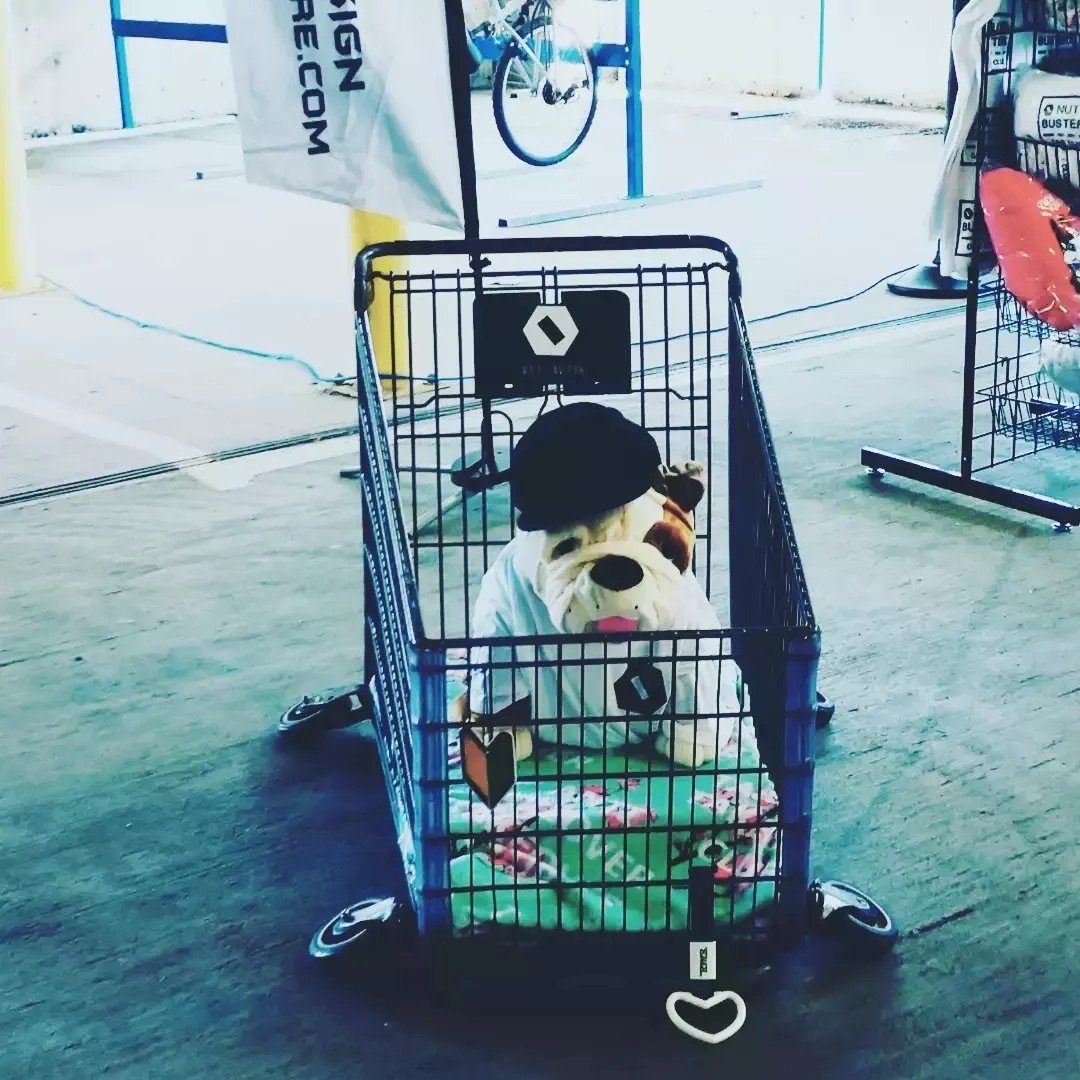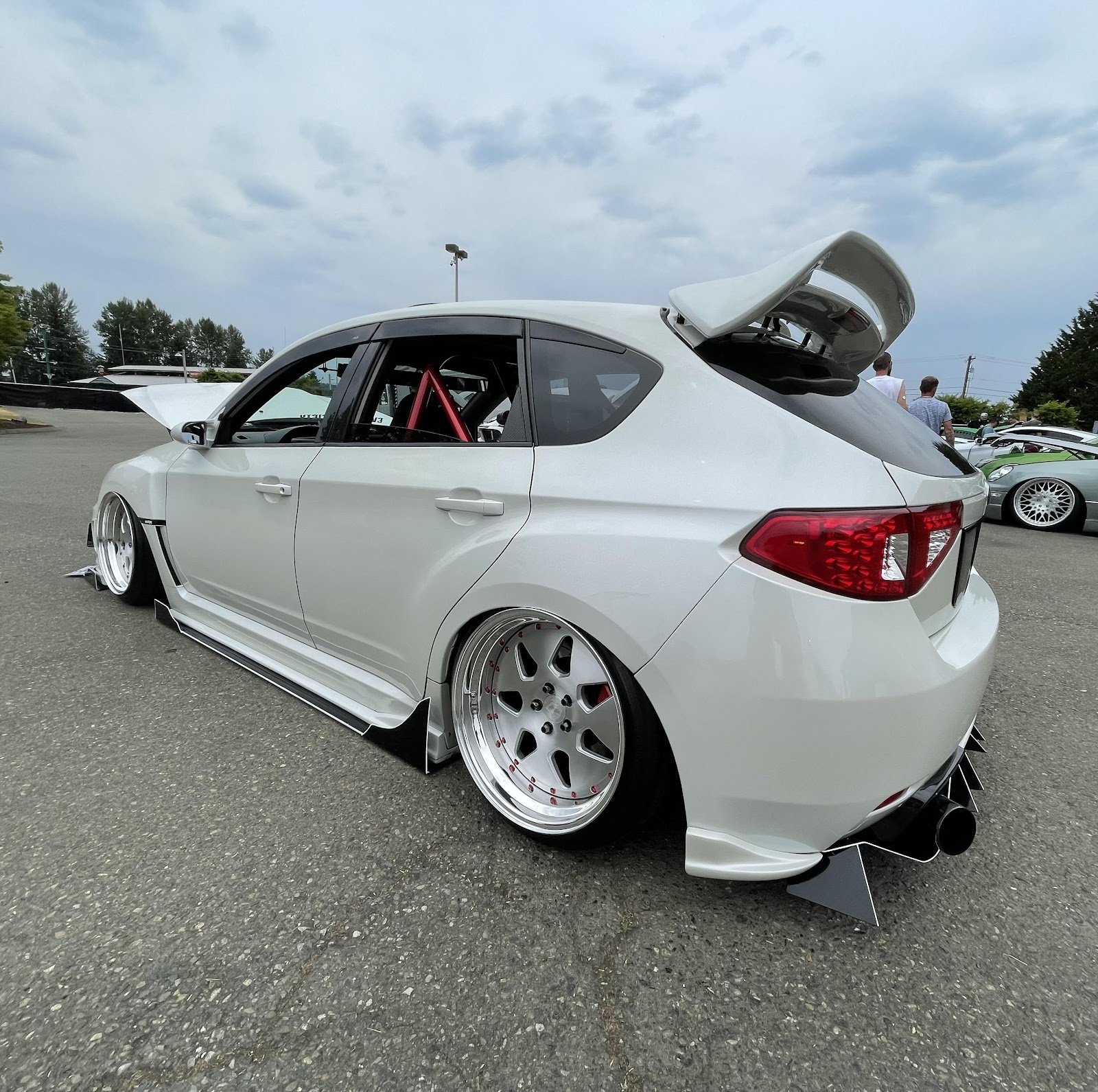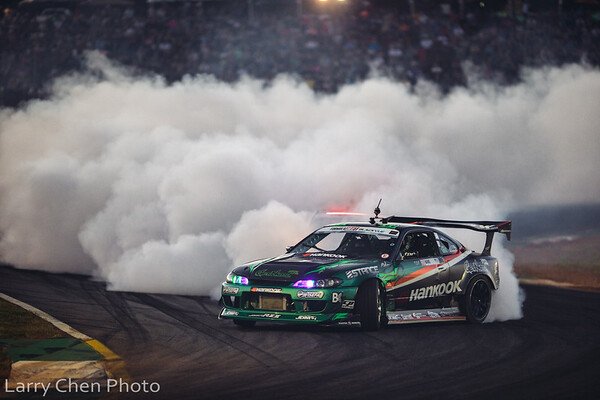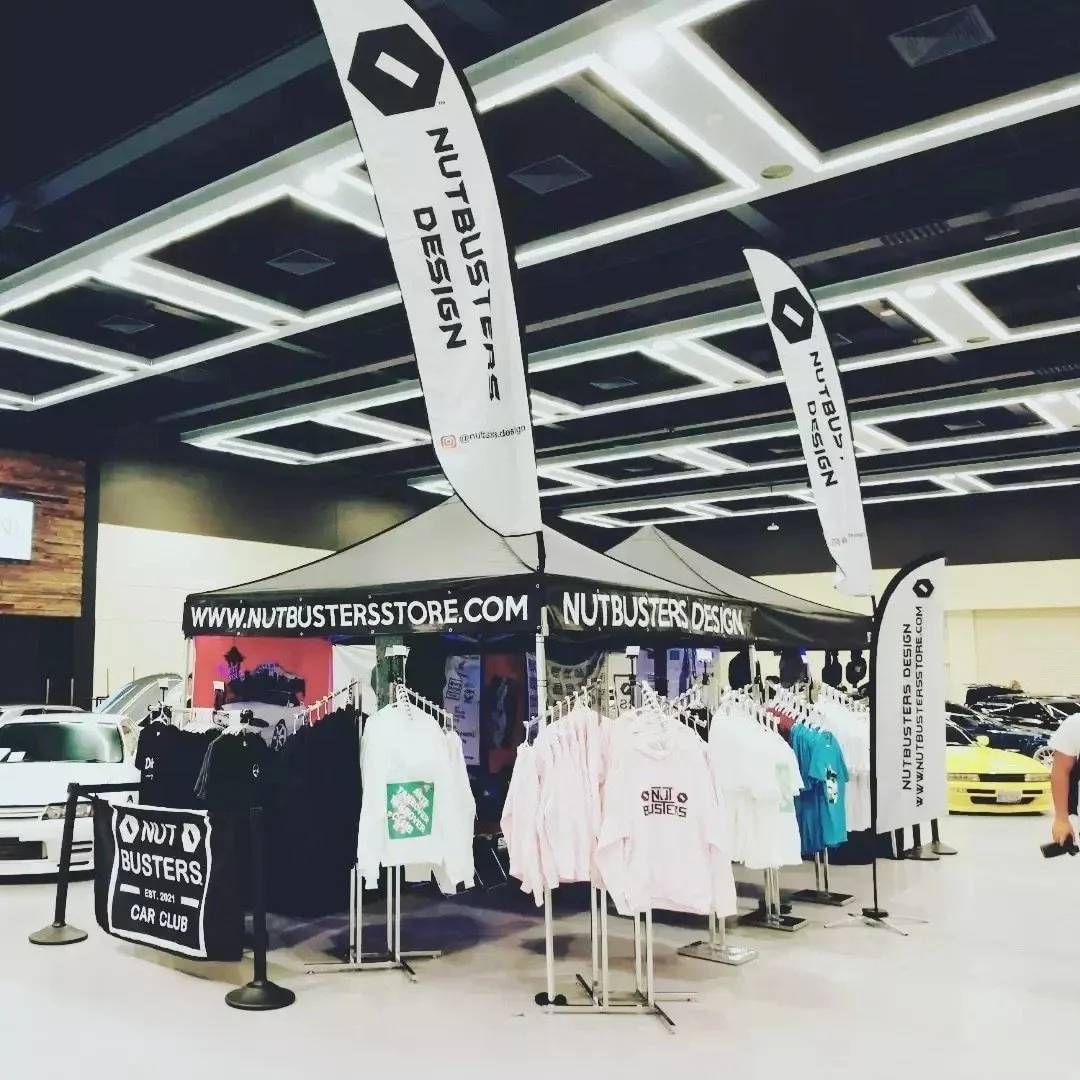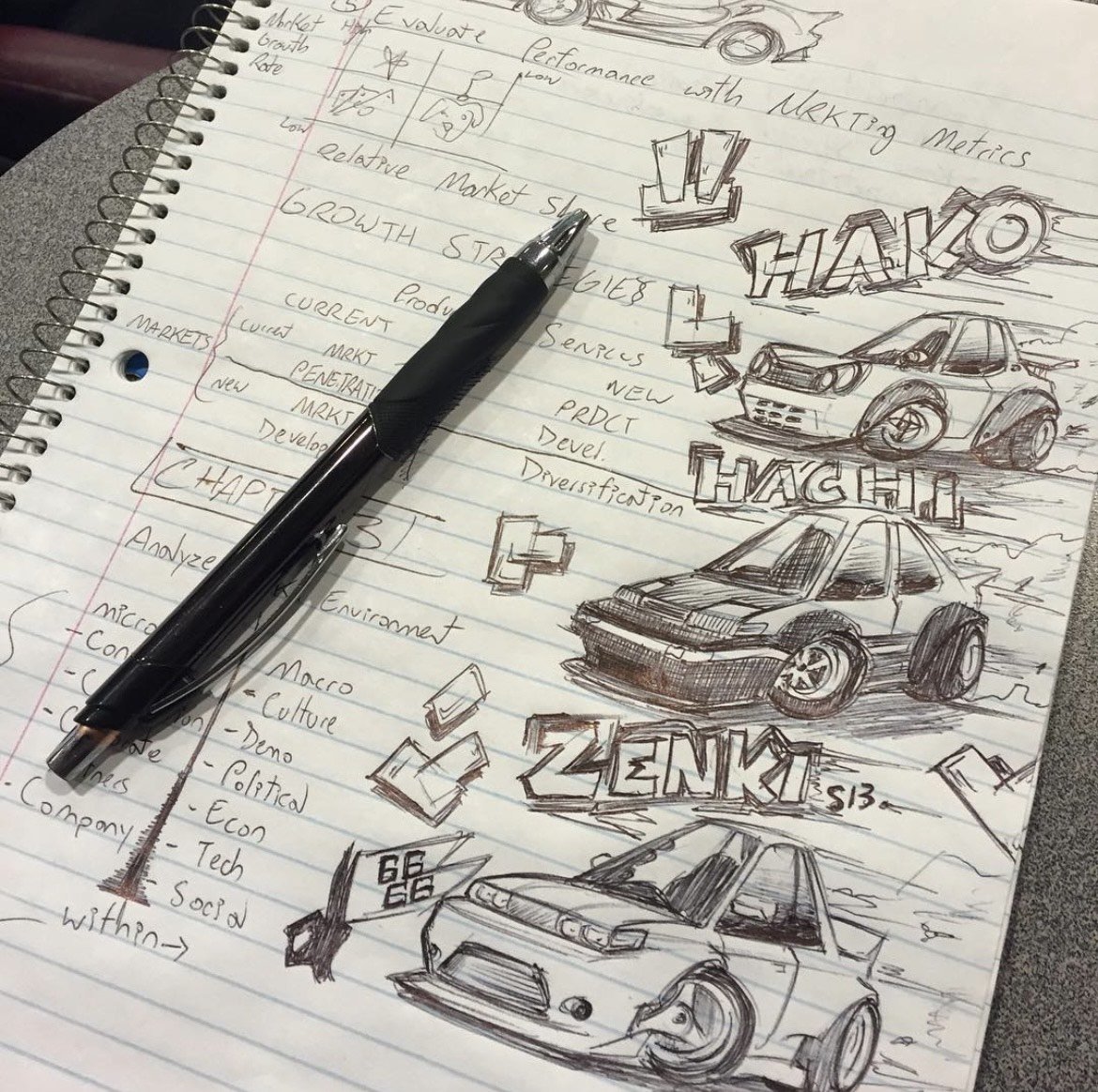THE AMAZING CREATIVITY OF DRIFTING
Photo courtesy of Nutbusters Design.
Art Forms Inspired By The Drifting Motorsport.
Perhaps, you’ve heard a friend or peer call drifting an art form. You may have stopped to ponder what they meant or just associated the comment to the style of driving.
After all, the mere idea of drifting a high-speed car around a treacherous corner must have come from some creatively genius mind. Right? (see our article The Japanese Legacy Drifts On)
Indeed, watching a driver effortlessly swoop a car sideways to slide around a bend is an elegant sight. It’s the kind of driving talent that resembles a symphony conductor whose main job is to ensure multiple and diverse instrumental sounds all happen with synergy. Likewise, a drift run that flows with ease, demonstrates fluid driving control, and includes a fascinating mix of sounds - in its own right - is truly an art form.
Add in a driver’s individualized handling style and drifting becomes a personal artistic expression. Compared to other motorsports, this is a quality that makes this genre of competitive driving highly unique and incredibly entertaining.
However, there’s a lot more creativity within the sport of drifting than driving style. In fact, this motorsport is literally a hotbed for creative talent, so we decided to look a little deeper into why drifting inspires so much creativity.
Photo courtesy of Drift Enthusiast Magazine.
Drifting Innovation Begins Under The Hood.
In the words of PRO Formula DRIFT driver Kyle Mohan, the process of building an engine is, “a true artform.” Mohan came into the mechanical side of the automobile industry with a deep appreciation for art (see Mohan’s story here), and when he discovered the beauty of tuning engines, it became his most passionate creative outlet.
And, Mohan isn’t the only one that sees the artistic brilliance in tuning engines. The love affair with the combustion engine has captivated many gearheads all over the globe. They’ve been gathering together for nearly a century now - showing off their latest tweaks and builds - at the world’s many amazing car shows.
In drifting, the show culture includes a wide variety of unique attributes, including creative engine builds. And, though some drifting show cars may only be visually modified to draw attention to aesthetics, many show car owners also pour their hearts (and their pocketbooks) into demonstrating creative works of art when it comes to power, noise, and speed.
Ironically, many of the radical engine modifications found under the hoods of show cars today were inspired by racing circuit practices intended for increasing performance and winning competitions.
Take titanium piping, for example. Drivers and teams have gravitated to this material because of its lightweight character and the fact that it’s more durable than steel.
However, the practice of adding titanium pipes to show cars gained popularity for other reasons. People loved its attractiveness on JDM (Japanese Domestic Market) and other car builds, so show car owners followed suit by incorporating titanium piping into vehicle builds to emphasize style.
Photo courtesy of Drift Enthusiast Magazine.
Artistically Designed Drift Car Bodies.
Interestingly, several other high-performance racing aspects have also been integrated into the drifting show car community. Wheel cambering is a great example of a fundamental racing practice (cambering aides a driver with cornering) that has curiously found its way onto show cars simply because of the eccentric look.
The same is true for body kits. Originally developed in motorsports for high-speed aerodynamic reasons, body kits are now a popular aesthetic modification on drifting show cars.
In an article entitled Are Body Kits for Show or for Go?, Timothy Z., a technical writer and product consultant at CARiD, explained how, “Careful sculpting of body panels, with addition of air dams, skirts, rear spoilers, ridges and diffusers, serves to control airflow around the car - yielding a lower coefficient of drag, along with greater amounts of downforce, that keep a car pressed against the ground at higher speeds.”
His article also covers body kit applications for aesthetic purposes, including common differences between performance kits and kits that get applied to show cars. “Many of these kits, created for maximum style, focus on looks more than aerodynamic improvements,” Timothy Z continued. “The truth is, aerodynamics add-ons don't provide substantial benefits at everyday driving speeds the way they do at racetrack velocities.”
Even more interesting, is competitive drifting itself, doesn’t require the same measures for speed and aerodynamics as time-attack motorsports do. Therefore, many body-kit modifications made to competitive drift chassis are made for show as well. This practice, then spurred a huge body-kit craze across the non-competitive show car world.
Let’s take PRO driver Forrest Wang (@forrestwang808), for example. As a quintessential, Hawaiian ‘grassroots-drifter-turned-pro’, Forrest has been styling up the track with his fabulous driving talents and outlandishly outfitted drift rides for the better part of twenty years. If you’re curious what we mean by this, take an hour to watch this incredible YouTube interview with Wang, conducted and produced by the one-and-only Aaron Losey of Lone Star Drift (@lonestardrift)
In short, Wang is known for running cars with some of the biggest, prettiest, and most ostentatious body kits in drifting. To that end, one of his most memorable aesthetics, is the humongous wing that adorns the aft-end of his Nissans.
Remember, aerodynamics aren’t much of a factor in competitive drifting, so wings are truly an all-for-style modification on any competitive drift vehicle.
In Wang’s case, it stole the show. Not only did the distinctive look elevate his pro-drifting brand, but the look caught on like wildfire, and JDM show car owners everywhere started adding big ‘wangs’ to their builds.
Photo courtesy of Larry Chen.
Furthermore, you can see many other style-related influences derived from drifting at most of the world’s car shows today (including your local neighborhood event). It’s now very common to see at least one super clean, stanced, and lowered 240sx, 350z, s13, Sylvia, Miata, or s2000 (or any other rear-wheel-drive JDM vehicle) alongside muscle cars, hotrods, and restored vintage rides. Many of these show-quality JDMs come with modified upholstery and interiors, high-end wheels, stand-out wheel fitment, custom body kits, big wings, tinted window treatments and stickers, and so on. All of which are pricey enough to keep the car off the track.
All this said, there’s another side to this story.
It’s widely known in the drifting community, some people build show cars to look like drift cars, but others build drift cars to drift, and also show them.
Vintage JDM models, such as the Toyota AE86, Nissan R32 Skyline, Mazda RX7, and other rare finds are often found on the track and in the show lot at drifting events. And, they’re always fun to gawk at (regardless of the shape they’re in), just because they represent some of the most revered drifting vehicles ever made.
In fact, it’s a total treat to see these gems anywhere at the track, regardless of dents or nicks in the paint, beat-up fenders and doors, broken arrow pieces and front splitters, cracked tail lights, missing corners from bumpers (or even an exposed bash bar), and easily replaceable wheels. These are also the cars that bring tuners over to the show lot, because they almost always have cool (yet functional) engine and exhaust builds.
In short, these are the cars that transcend between track and show. Proving once again, there’s a true convergence between aesthetics, performance, and style in drifting.
Photo courtesy of Nutbusters Design.
Graphics Made For Drifting Fans.
This brings us to one of the more traditional genres of art that has both influenced, and been influenced, by drifting.
Obviously, graphic design is a major creative outlet in any business arena, but entertainment-focused business channels are particularly reliant on this type of visual media.
In drifting, graphics can be found across the entire drifting ecosystem; from trackside signage and promotional branding, to every wearable or signable piece of merchandise you can think of, along with expressive digital graphics found on web and social sites affiliated with the sport.
“The ‘drift fan’ is a fun and inspiring fan that loves the thrill of the competition as well as the tech that goes into the cars,” said Joe Krissoff, director of operations at NutBusters Design. “Coming up with new NutBuster styles that support these interests is a fun activity, because it totally aligns with their excitement.”
We’ve already noted vehicle aesthetics have huge influences on the drifting world, and when it comes to graphics, everything from sticker bombing to full-on livery wraps are everywhere in drifting.
It doesn’t matter if you’re watching a Hoonigan video, following a Japanese drift train, hanging out with underground street drifters, attending an open drift, or getting in a little competitive drift time at the track; you can’t escape the massive array of stickers and livery designs found in the sport. It’s an integral part of the culture.
Photo courtesy of Larry Chen.
“It’s fun to design Dan’s liveries, because I believe drift cars represent the driver’s style and presence, so seeing it out on the track literally breathes life into the car,” shared Renee Burkett, professional graphic designer and team spotter for RAD Dan Burkett’s PRO drift team (read more about Renee in our article The Art of Spotting).
Of course, not all grassroots (or even PRO) drift teams have this kind of accessible graphic talent in their wheelhouse (so to speak). Nevertheless, it seems a fabulous-looking livery is a never-ending goal for most competitive drifters. In fact, releasing new livery designs has become a thing in pro drifting and showcases the driver’s brand, personality, and style.
The same is true for other types of team-branded merchandise and wearables that can be designed- or geared - for different cross-sections of the drifting community.
In total, creative digital designers do so much to make the business of drifting splash, speak, and wow, and it’s their talents that have filled the sport with color, fullness, and vitality.
Photo courtesy of Lena Pings.
Drifting Photographers and Illustrators.
And, if credit for color goes to the sport’s graphic designers, it’s the drifting photographers and illustrators that know how to creatively capture the fun and spirit of the sport in still form.
Of course, any moving sport is a joy to capture on film, but there’s a certain kind of magic involved in capturing great images of drifting cars. It’s a challenge both hired and non-hired photographers all over the world have taken on. Many of them have perfected the art of shooting truly amazing, up-close-and-personal, skidding-car moments in the smoke.
“What makes drift photography interesting to a photographer like me, is of course, the action, power and speed, and driving skills,” shared Angelo Lopez, principal of Octane n Piston Photography (@octanenpiston). “But, what makes it really interesting is everyone in the drift community is super-chill-hella-friendly and supportive.”
Photographer Hasan Ingraham, from Coral Springs, Fla “looked to Larry Chen” to study the best drifting photography techniques. Ingraham, who’s images of Florida pro and grassroots drifting events can be seen in a plethora of web stories, indicated his favorite challenges of trackside photography are “capturing the moment in a short period of time, keeping a steady hand while panning and focusing at the same time, and trying to tell the story with a photo.”
We’d be remiss not to mention Larry Chen again - perhaps, the most renowned and iconic motorsports and drifting photographer ever - as well as a few more amazing pro drift shutterbugs such as David Karey, Victoria Goeckle and Caitlin Ting.
Fabulous drifting photos from these artists, and many, many others, can be found in every corner of the digital world, from uncountable social pages (especially on the Gram), to every driving team, sponsor, and media website, as well as photography portfolio platforms like SmugMug, Shutterfly, and Zenfolio.
The best part is most of these artists are open to sharing their works with other groups in the drifting industry in exchange for a heads up and proper mention. You don’t find this level of creative courtesy in many other industries, so big props to all the great drifting photographers who believe in spreading their love for the sport.
Photo courtesy of Marco Fernandez.
While we’re on the subject of still-image artists, we feel it’s also important to call out the visual illustrators that have dedicated time to creating artwork showcasing the drifting culture.
Since drifting originated from Japanese roots, it’s no surprise there are a number of anime’ illustrators who also invest time in drawing drifting cars and imagery. Drifting illustrations are prevalent on Instagram, and some artists have even built businesses to sell their works commercially as framed images, trading cards, stickers, and other appliques.
Marco Fernandez, of MFREX Designs (@MFREX), is one such artist. A lifelong illustrator and car enthusiast, Fernandez started drawing cars in the early 2000s after the movie The Fast and The Furious was released. “I fell in love with eclipses and similar cars from that era,” he said.
Drifting caught his eye, but he didn’t start illustrating the drift scene until a friend invited him to a live Formula DRIFT event, “Seeing it in person just changed my life,” he said, “It gave a whole new perspective to the cars.”
In 2015, Fernandez started making trading cards and stickers for a handful of professional drifters, and then his artwork and the cards started getting popular. “More of the drivers came to me asking for stickers and art,” he recalled. “Receiving the recognition from the drivers and fans made me feel like I could be a part of it.”
Live-Action Drifting Entertainment.
Outside of the live-action drifting events (both competitive and non-competitive) all over the world, there are also a number of other ways fans get live-action drifting entertainment.
If you’re deeply into drifting, you know about the blockbuster Japanese street-racing manga series, Initial D, featuring a white Toyota Corolla AE85 Trueno. In 2005, the Initial D story was also recast as a live-action film, followed by the movie The Fast And The Furious: Tokyo Drift, released a year later. Both films showcased the street-racing culture and Japanese roots of drifting.
Now, twenty years after the first professional drifting league known as the D1 Grand Prix (D1GP) began, a feature film about drifting has finally been released in Japan.
Alivehoon (aka Alive Drift) features genuine, live racing footage shot at Japan’s famed Ebisu Circuit, and the filming was overseen by Keiichi Tsucihya (Japan’s own revered Drift King), with the help of contributing pro-stunt drivers Masato Kawabata and Daigo Saito.
The Alivehoon story is based on a talented esport gamer who suddenly finds himself competing in the big leagues. An apt twist of fate that leads us to yet another highly creative live-action part of the drifting ecosystem.
Drifting in video gaming gained popularity a decade or so ago after Forza featured Hoonigan’s car lineup. Other drift racing games such as Assetto Corsa, CarX Drift Racing, and Torque Drift followed. In fact, the long-awaited release of Torque Drift 2 featuring scenery from Formula DRIFT is expected anytime.
Canadian Peter Jeakins (aka SLAPtrain to all you gamers) took the concept of drifting cars in games to another level when his YouTube channel went viral.
Jeakins showcases his driving prowess by producing and broadcasting gaming clips, including tips and tricks commentary, for viewers. His channel is so popular, he makes a nice paycheck just by sharing what he loves to do.
In his video, entitled My Story, Jeakins shares where the idea to broadcast his talents came from. “When I first started doing video on YouTube, I did it because I kinda wanted to get out my creativeness with video games,” he said. “People loved Forza and it just steamrolled from there.”
SLAPtrain, Lone Star Drift, Hoonigan, Adam LZ, Chelsea DeNofa, RAD Dan Burkett, Animal Style TV, and many, many, many other vloggers are all amazing creatives as well. And, most of these stars were inspired by the alluring topic of ‘cars going sideways’.
These good-natured hams are part of an entire world unto its own. A world of live-action YouTubers that feature drifting clips, stories, interviews, and anything fun they can share. They’re not quite considered formal media players, so they’re able to keep the mood light and the drifting banter flowing. Of course, if you’re a YouTube watcher of drifting, you know these folks well, and you also know you are a vital part of what makes them the sensations they are.
Lastly, but definitely not least, we’d like to cover the area of remote control (RC) drifting. Of course, the competitive side of this mini-drifting sport is far different from traditional live-action competitive drifting, but it’s just as fun (well, maybe…haha). This type of live-action drifting involves a different combination of aerodynamic science and skill, along with vehicle setups that still require constant tinkering, but not the kind that costs an arm and a leg.
Another wild talent found in RC drifting creatives is their ability to maneuver a small, tangible object on the fly. Just like in real drifting, but these drivers do it with a controller.
Incredibly, RC drifting attracts everyone from professional drivers to gamers; all of whom love the quickness and dynamic aspects of driving their mini-drift car in serious competitions and drift trains.
Photo courtesy of Hoonigan Industries.
Never Ending Passion.
If you’re still with us, thank you for hanging in there. We’ve been wanting to take a crack at this article for nearly six months now. After starting our research, we realized the topic (much like this article) was growing legs and appeared endless.
Our article does have to end, but we know we wouldn’t have done the creative side of drifting justice if we didn’t cover every one of these bases. If you liked it, please let us know below or on one of our social media sites.
The short truth is drifting has a weird way of attracting creatives and inspiring artists to do more of what they love doing in an inclusive setting. Heck, there’s even a popular rap artist now (@xavierwulf) throwing down clever lines about drifting and cars. Way to just be you, Xavier Wulf!
This fact in itself, lends credence to the idea that the sport of drifting cars casts a wide net into the creative world. And, the talents, artistry, and creative wisdoms of all will surely be welcomed openly by the amazingly creative drifting community.

